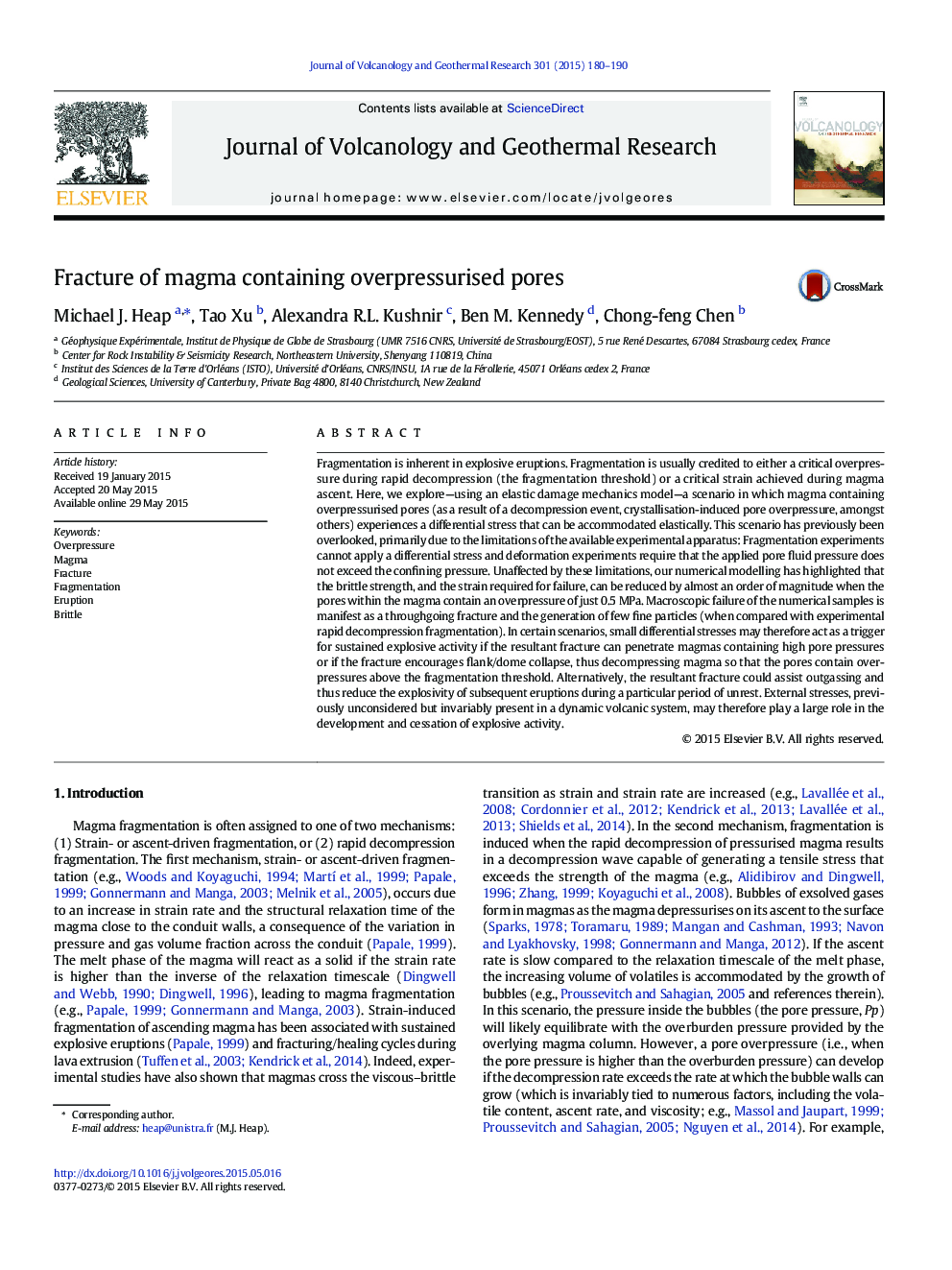| کد مقاله | کد نشریه | سال انتشار | مقاله انگلیسی | نسخه تمام متن |
|---|---|---|---|---|
| 4713123 | 1638321 | 2015 | 11 صفحه PDF | دانلود رایگان |
• Magmas can contain overpressurised pores.
• We use a numerical model to study their influence on brittle strength.
• Overpressurised pores dramatically reduce the brittle strength of magma.
• Small stress perturbations could therefore induce magma fracture.
• Magma fractures could permit outgassing or trigger instability/eruptions.
Fragmentation is inherent in explosive eruptions. Fragmentation is usually credited to either a critical overpressure during rapid decompression (the fragmentation threshold) or a critical strain achieved during magma ascent. Here, we explore—using an elastic damage mechanics model—a scenario in which magma containing overpressurised pores (as a result of a decompression event, crystallisation-induced pore overpressure, amongst others) experiences a differential stress that can be accommodated elastically. This scenario has previously been overlooked, primarily due to the limitations of the available experimental apparatus: Fragmentation experiments cannot apply a differential stress and deformation experiments require that the applied pore fluid pressure does not exceed the confining pressure. Unaffected by these limitations, our numerical modelling has highlighted that the brittle strength, and the strain required for failure, can be reduced by almost an order of magnitude when the pores within the magma contain an overpressure of just 0.5 MPa. Macroscopic failure of the numerical samples is manifest as a throughgoing fracture and the generation of few fine particles (when compared with experimental rapid decompression fragmentation). In certain scenarios, small differential stresses may therefore act as a trigger for sustained explosive activity if the resultant fracture can penetrate magmas containing high pore pressures or if the fracture encourages flank/dome collapse, thus decompressing magma so that the pores contain overpressures above the fragmentation threshold. Alternatively, the resultant fracture could assist outgassing and thus reduce the explosivity of subsequent eruptions during a particular period of unrest. External stresses, previously unconsidered but invariably present in a dynamic volcanic system, may therefore play a large role in the development and cessation of explosive activity.
Journal: Journal of Volcanology and Geothermal Research - Volume 301, 15 August 2015, Pages 180–190
